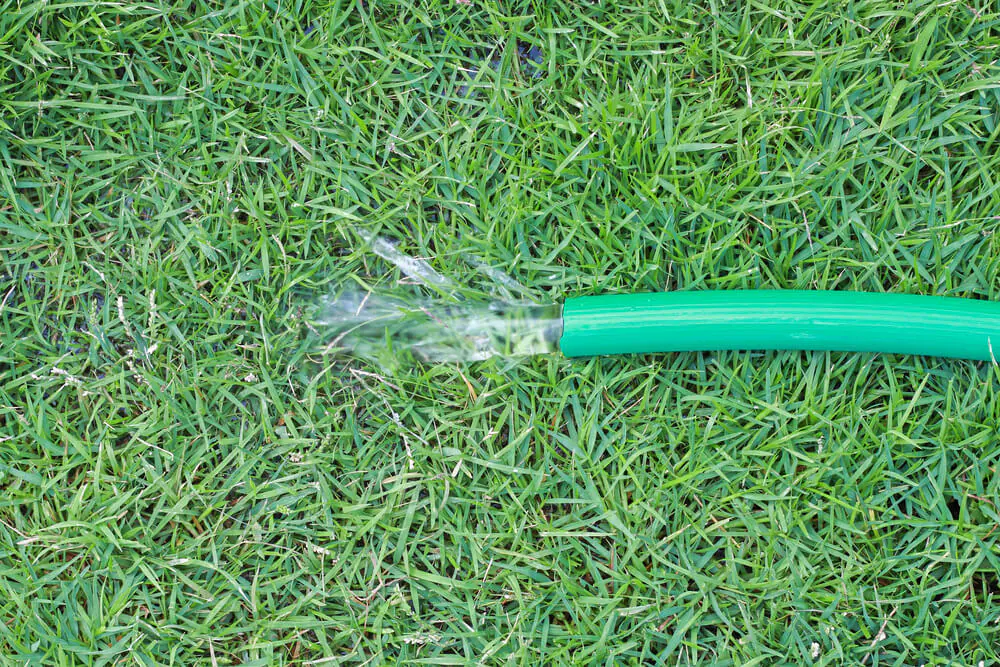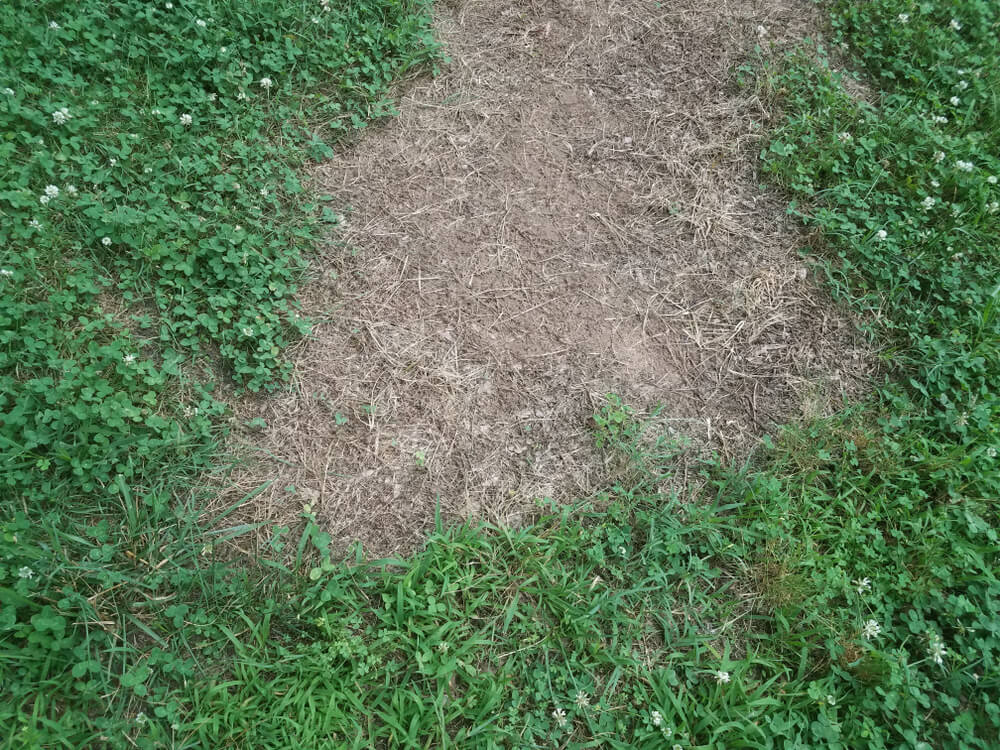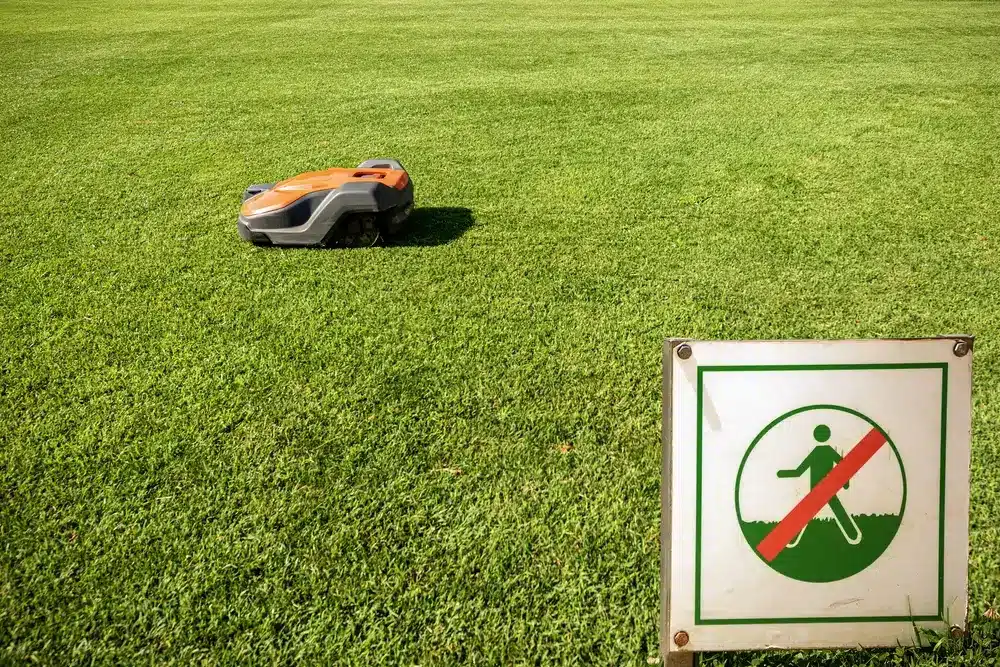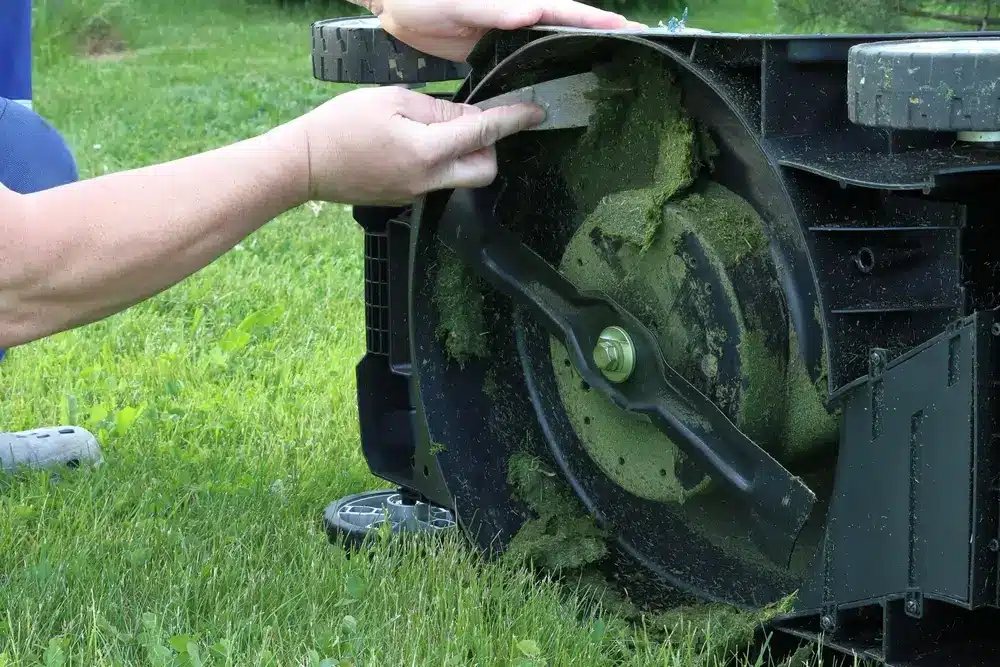Last Updated: February 25, 2025
Every lawn needs two essential elements to stay green, vibrant, and thrive – sunlight and water. With the right turf variety, sunlight won’t be a problem, even if you can’t control how much your property gets. The bigger problem is your watering habits. After all, the frequency and amount are crucial when watering grass. But why is the amount of water your lawn gets important? Moreover, can you overwater grass? But how do you know when your watering routine is doing more harm than good? Let’s look into this further below.
Understanding and Managing Overwatering in Lawns
Overwatering grass, whether established or new can lead to several problems. The excess water overwhelms the grass and can cause the root system to not get enough oxygen and nutrients and eventually rot. The diseased sections will eventually spread and kill other nearby root systems causing a devastating domino effect.
For homeowners managing new lawns, balancing moisture levels is critical. Too much water too soon may hinder healthy root establishment, causing long-term lawn issues. For new turf, it’s crucial to balance the need for more frequent watering to establish the root system with the risk of overwatering. While new turf requires consistent moisture to grow strong roots, too much water can cause root rot and other issues. Now, if you’re thinking, “how often should I water new turf?” It’s crucial to start watering immediately after laying the turf.
In terms of how long to water new turf, the establishment phase can last 2-6 weeks, depending on the turf variety and season. During that time, it’s crucial to keep the soil consistently damp. Water your new lawn lightly three times daily, making sure it never dries out to ensure proper establishment.
A common issue among lawn owners, especially without an automatic irrigation system, overwatering can be corrected. Recognising the signs and understanding the proper watering techniques are key to restoring and maintaining a healthy lawn.
What Are the Signs of an Overwatered Lawn?
Your lawn will try to tell you when something isn’t right, you just need to learn what to look for and where to look.
Here Are Some Signs to Keep an Eye On:
#1. Discoloured or Pale Grass
If your lawn looks yellow, brown, or pale green when it should be a lush, deep green colour, then there’s a good chance it’s getting too much water. Consider reducing watering frequency immediately to restore its vibrant colour.
#2. Mushy Soil
Overwatered soil will often feel spongy and soggy. Give your lawn a gentle squeeze – if it squishes out between your fingers, the ground is holding too much water.
Quick Tips to Spot Issue #1 and #2 Faster
- Observe your lawn after a scheduled watering session. Does water pool on the surface or run off?
- Inspect the area early in the morning for spongy spots—this is when symptoms of overwatering are most noticeable.
#3. Thatch Everywhere!
Thatch is a layer of dead and living grass, roots, and other plant material that can build up over time. Too much thatch indicates overwatering and may even lead to other lawn problems.
#4. Excessive Weeds
An overwatered lawn meets the optimum conditions for weeds to thrive. If you’re dealing with an excess of weeds, try cutting back on how often you water your lawn.
#5. Fungi
Fungal diseases like dollar spot, brown patch and powdery mildew love wet soil. So, if you see any of these on your grass, it’s a definite sign that your lawn is getting too much water, and you may need professional assistance. Remember, fungi can be a big problem since they can be harmful to pets and children.
#6. Bug Infestations
An overwatered lawn is also more susceptible to pests and bugs that can cause harm to your plants. If you notice a large number of harmful critters in your grass, it’s an indicator that you’re watering too much.
#7. Runoff
Runoff is a sign that your lawn can’t absorb the water you’re giving it. If this happens, try reducing your watering times or consider installing an irrigation system to better manage how much water goes into your lawn.
#8. Thinning Grass
Too much water can also cause the grass to thin out, as the roots can’t absorb enough nutrients. If you see your grass starting to look sparse and thin, cut back on the amount of water you’re giving it.
#9. Bare Patches
Bare patches can be an indication of either overwatering or underwatering. Either way, you’ll need to adjust your watering schedule and ensure that your lawn gets the right amount of hydration.

What Can You Do to Fix an Overwatered Lawn?
The good news is you can fix an overwatered lawn. Here’s what you need to do:
- Stop watering your lawn for a few days and allow the soil to dry out naturally.
- Aerate compacted soil to improve water absorption.
- Invest in tools like moisture meters to ensure precision in watering.
- Increase the amount of sunlight that your property is getting by trimming trees and shading plants.
- Reduce the number of times you’re watering each week, and make sure you’re only doing so when necessary.
- Invest in an irrigation system to help you better manage how much water your lawn is getting.
By following these steps, you can fix an overwatered lawn and restore it to its former glory.
If you still need help with your lawn, feel free to contact a professional landscaper or lawn care service. They can help you diagnose the problem and provide expert advice to get your lawn back in tip-top shape!
Is There a Quick Fix to Overwatering?
While there’s no instant solution to remedy an overwatered lawn completely, one of the fastest ways to start the recovery process is by improving drainage. You can do this by aerating the soil, which allows excess water to evaporate more quickly and helps roots access much-needed oxygen. Additionally, reducing watering frequency immediately and adjusting your lawn care routine can prevent further damage. While these steps will start the healing process, patience and consistent care are key to restoring your lawn’s health fully.
How Do You Prevent It from Happening Again?
If you still don’t know the acceptable amount of water your lawn needs, either get a reticulation system or leave the entire task to the pros. There’s no harm in accepting that lawn care is not for everyone. Instead of risking your turf’s life, pick up the phone and call people who know what to do.
Avoid Lawn Problems with Green Oasis Lawn & Reticulation
Are you ready to invest in reticulation services for your lawn? Get lawn sprinkler system installation at Green Oasis Lawn & Reticulation for guaranteed quality service. Remember, a proper irrigation system can do wonders for your property, solving most of your watering problems, including overwatering. Moreover, you can be at ease wherever you are, knowing that your watering schedule won’t get interrupted.
Get in touch today to schedule a consultation and discover how professional reticulation services can make a difference in your lawn’s health and beauty. Don’t let overwatering ruin your outdoor spaces—take action now!






